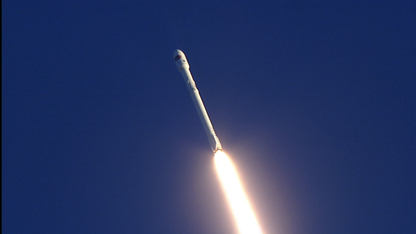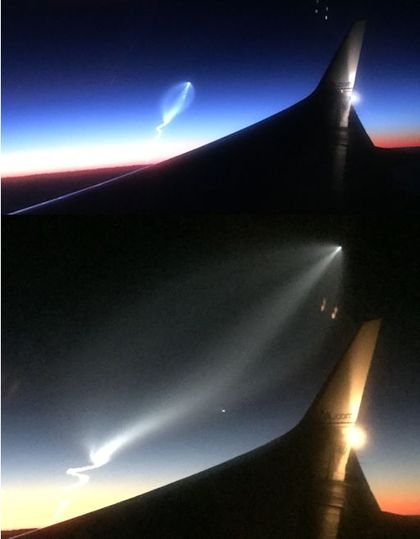DSCOVR blasted off from Cape Canaveral on Wednesday 11 February at 6:03 p.m. EST atop a SpaceX Falcon 9 rocket. Shortly after liftoff, an American Airlines flight en route from JFK to San Juan flew past the area. Passenger Tim Leavitt pointed his iPhone out the window and captured some remarkable shots of the rocket's exhaust:
The spacecraft is now on its way to the L1 point where it will monitor the solar wind one million miles upstream from Earth. NOAA says DSCOVR is in good health. Its solar arrays have deployed and it is communicating with the ground. Approximately 150 days after launch, DSCOVR will replace ACE as our primary warning system for solar magnetic storms.
In addition to monitoring the solar wind, DSCOVR will also look back at Earth. The spacecraft's EPIC camera has ten filters for photographing our planet at wavelengths ranging from UV to visible light. True-color images of the full sun-facing side of Earth will be publicly available approximately 24 hours after they are taken. The first images will be posted approximately six months after launch. EPIC's observations will be used to measure ozone and aerosols, cloud height, vegetation properties and the ultraviolet reflectivity of Earth. Another instrument onboard, called NISTAR, measures solar energy reflected from the sunlit face of Earth. This will help climate scientists track changes in Earth's radiation budget caused by human activities and natural phenomena.
www.spaceweather.com


 RSS Feed
RSS Feed